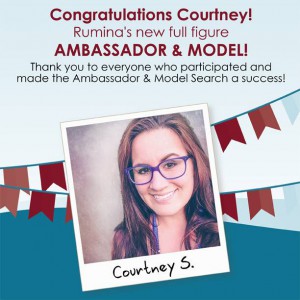The Boob Group
Breastfeeding with Large Breasts
[00:00:00]
Please be advised, this transcription was performed from a company independent of New Mommy Media, LLC. As such, translation was required which may alter the accuracy of the transcription.
SUNNY GAULT: This episode of The Boob Group is brought to you by RuminaNursingwear. Hands-free pumping and nursing tanks and bras to support your breastfeeding goals. Visit www.pumpandnurse.com and save 20% with promo code BOOBGROUP20.
[Theme Music]
CINDY HARTSHORN: Are you a mom who is concerned about breastfeeding your baby because of your large breast? Have you been told that you won’t be able to do it? Are your fears getting in the way of believing you can successfully breastfeed? I am Cindy Hartshorn an IBCLC with a private practice in San Diego California. Today we are talking about breastfeeding with large breasts. This is The Boob Group.
[Intro/Theme Music]
LEILANI WILDE: Welcome to The Boob Group, broadcasting from the Birth Education Center of San Diego. The Boob Group is you’re weekly, online, on the go support group for all things related to breastfeeding. I'm your host, Leilani Wilde, I'm also an IBCLC and owner of Leilani’s Lactation and Doula Services.
Did you know we’ve released more than 120 episodes to help you on your breastfeeding journey? Visit the episode guide on our new website at www.newmommymedia.com to see the complete list.
You can click on the episodes and listen through the websites or download our free apps available in iTunes, Google Play and windows and listen on the go. If you enjoy listening to our show then please take the time and tell other breastfeeding mamas about it so we can help encourage them all. Now Sunny is going to tell us more about our virtual penniless program.
SUNNY GAULT: Hi everybody, so if you are not here in the studio with us there are some ways that you can participate in our conversation. I’m also always posting stuff to Facebook and Twitter. So look for The Boob Group there and I usually use the #BoobGroupVP. VP standing for virtual panelists, so I’ll post different questions about the episodes that we’re going to be recording and I’m always looking to see what you guys have to say about it so I can incorporate that in to the shows. So that’s a great way to participate, just check out our Facebook and Twitter page.
LEILANI WILDE: Great, so we’re going to introduce our panelists and we have Courtney on the phone, Courtney?
COURTNEY STEKIN: Hello my name is Courtney Stekin, I am representing RuminaNursingwear. It’s a really great company offering some awesome solutions for mothers nursing their babies especially for moms like me who have larger breasts. I’m also a professional photographer specializing in new born and breastfeeding photography.
I'm 29 and live in Kansas City Missouri. My sweet kids are two little boys I have an almost five old Eli, and I'm also nursing a one year old Evaline. And if hear him today he’s squeaking along with us.
LEILANI WILDE: Awesome!
COURTNEY STEKIN: Thank you.
LEILANI WILDE: And we have Jenna.
JENNA CONKLIN: Hi my name’s Jenna Conklin, I’m 36 years old, I’m a stay at home mom. I have a son whose three and a half years old, and I have a two and a half month daughter who’s in the studio with us as well.
LEILANI WILDE: Great thank you, and Ruth.
RUTH: Hi my name is Ruth. I am 32 years old and I’m a nurse. Currently though I'm not working I don’t plan to go back to work until January. I have two identical twin girls and they’re 10 and a half weeks today.
[Theme Music]
SUNNY GAULT: Before we start today’s episode, which is focused on women who are a bit more curvy on the top, we’re joined by Amanda Hall from Rumina nursing wear. And Rumina has just announced the winner of their full figure bra ambassador and model search. And Courtney who you just met is a panelist on our show today, she is their new ambassador. So Amanda thanks so much for being on The Boob Group and you know I love that you’re focusing more on full figured women. What prompted this search for Rumina?
AMANDA HALL: Hi Sunny well, thanks for having me. The full figure bra really came about when my sister and I launched our [carpanaus] line. We constantly heard over the years, that full figured moms mind about their cup size were really wanting a good nursing option and hands free pumping option. They kept telling us there was nothing out there and they really seemed frustrated about it.
So Dawn, my sister and I really kind of put our heads together and over the last couple of years had talked about it, had chatted about it really wanting to develop something that will meet the needs of these moms. So for the past year about I was saying we’ve been sketching out a prototype designing the bra and when we were ready to do our first one with designing something, we really needed to pull in moms who were on the curvier side, who were the larger breasted to get their feedback and to tell us how the bras fit, and how supportive that was and how comfortable.
So we started developing the full figure bra and kind of ran into the idea of doing an ambassador search where we involved a lot more moms, got their feedback on the product and we’re still in that developmental stage right now. So that’s how we came about.
SUNNY GAULT: As we mentioned earlier Courtney is the new ambassador so besides being on fun shows like The Boob Group what is Courtney going to be doing as ambassador for Rumina?
AMANDA HALL: Well, Courtney has a fun role she is going to be an ambassador but also the model for the full figure bra. So we are flying her out later this month to do a photo shoot and she will be the face of the full figure bra. So you’ll see her on all of our packaging, marketing, all of the information. And then she’ll also be chatting with moms on all the social media platforms, Twitter, Facebook, doing podcasts, Google hangouts, really talking with moms maybe about their struggles and uniqueness of breastfeeding with larger breasts but also talking about body positivity and hopefully she’ll come to some of our baby events throughout the year next year.
So moms can talk with her one on one. They can listen to her story, she can listen to theirs and really connect with moms in a different way. So she has a fun role, you’ll see her more and more.
SUNNY GAULT: Would you say Amanda, is there a specific item or product that Rumina offers that is geared towards full figured women, and I bring this up because what comes to my mind is the full coverage tank because I literary use this thing pretty much daily, any time I have some time I need to work out, my kids give me a little bit of a break and I can hop on the elliptical for a little bit. This is so perfect for me.
After I had my twins I was a size G and I never thought my breasts could get that big but apparently they can and I just love this tank because it fit me well as a G and now that I’m a little bit smaller because the girls aren’t feeding quite as much I feel like it’s been able to adapt to my body and you know I'm one of those people I don’t like to wear a lot of different layers, if I can wear one shirt and accomplish it, as opposed to a tank and a bra I’ll do it.
This seems to have worked really well for me as a larger size you know breasted woman, would you say that that’s what most larger women you know find as far as a product is concerned that they really appreciate from Rumina?
AMANDA HALL: Yeah exactly. The full coverage tank is the product right now that will meet those needs. It goes up to a size G, we have a lot of moms who have reached out to us said they purchased it, they’re more of a size H and they love the tank top on. It’s all coverage it also comes up a little bit higher in the neck line to kind of give you a little bit more coverage and modesty so that when you don’t feel like you are showing so much.
So it really allows moms to have a tank top that’s both hands free pumping and nursing. We’re hoping that we can also fill that void for a bra with… a full figure bra. We’re hoping to increase the band size of the bra though. Right now the full coverage tank goes up to a 40. The full figure bra will go up to, we’re hoping to a 44, and still that G cup size. So we’re hoping to be able to meet the needs of a lot more moms out there with the bra.
SUNNY GAULT: Absolutely! Amanda thanks so much for being part of our show today, and we’re excited to talk to Courtney today so that should be a lot of fun.
AMANDA HALL: Thank you, have fun.
[Theme Music]
LEILANI WILDE: Today on the Boob Group we’re discussing breastfeeding with large breasts. Cindy Hartshown and IBCLC in San Diego California is an expert on this topic and is joining us here in the studio. Welcome to The Boob Group Cindy.
CINDY HARTSHORN: Thanks.
LEILANI WILDE: Cindy can women successfully breastfeed with large breasts?
CINDY HARTSHORN: Absolutely no question about that.
LEILANI WILDE: And what are their biggest fears that you are aware of?
CINDY HARTSHORN: The number one concern, every single person asks me is am I going to suffocate my baby?
LEILANI WILDE: Well we know that, that has happened, right. We have heard some stories, so it’s not like it doesn’t happen.
CINDY HARTSHORN: I have never heard of a baby suffocating by being breastfed.
LEILANI WILDE: Well not by being breastfed, but because of the large breast if the woman falls asleep.
CINDY HARTSHORN: Falls asleep and roll in the baby in the rung place on the couch and yeah, its…
LEILANI WILDE: Well, actually I was just reading something about it on Seeds recently just this morning.
CINDY HARTSHORN: I missed that one.
LEILANI WILDE: Yeah and they were talking about how, the concerns of a mom cradling a baby and when a new mom is breastfeeding she tends to lean forward also and if she is in the middle of the night and she falls asleep then the weight of the baby could actually put some pressure on that little one, so… so there are some concerns, but for the most part that’s rare and far between. It’s not for breastfeeding in general. Right, so Ruth, were you worried that you wouldn’t be able to breastfeed successfully?
RUTH: Absolutely I think a lot of women go through that especially if you are a first time mom. And with me having twins, I wasn’t sure I was going to have enough to breastfeed my two children too, because my mom and my sister had difficulty breastfeeding.
In fact my sister didn’t even get the chance to breastfeed at all because she didn’t have milk supply. And so with me, that was my biggest fear to just be able to breastfeed but you know I got a lot of help and a lot of resources and Leilani helped me a lot as well too.
I think initially I had like huge breast and they were always engorged and my two girls right are, they were tongue tied, and so that was a difficulty that we had too just because they wouldn’t latch on very well and I was just struggling with that but it’s getting better, it’s getting better each day. So there’s a lot of fears and having larger breasts I think it just comes naturally with having twins as well too. So I was surprised all of a sudden like bam! I had larger breasts.
LEILANI WILDE: How about you Courtney?
COURTNEY STEKIN: I was initially concerned about just being able to try with my oldest. That was five years ago, and I did have a really, very successful time with it. I went nine months all together, and I giggled back to work full time after three months, so I did pump for a long time but you know it was a bit of a struggle at first and it wasn’t that (inaudible) because of having larger breasts, it was just calling same concerns that all new moms face when nursing for the first time. For me, you know it was trying to find ways to get comfortable nursing and particularly being comfortable large breast with nursing in public.
LEILANI WILDE: Yeah, how about you Jenna?
JENNA CONKLIN: I wasn’t concerned about being able to breastfeed, I had like big cups before I was pregnant, so I never thought of myself as having large breasts but my goodness as soon as the milk came in they were like Dolly Parton. And that was with my first son and I was just surprised with how big they got and it was kind of shocking but I was able to breastfeed and it went well. So I think ignorance was blessed for me.
LEILANI WILDE: That is good. Let’s see, how long did it take you guys to overcome your fears or concerns when it came to breastfeeding for the first time and experiencing that with large breasts?
RUTH: I think for me it’s, it took a long time. I think it was at least a month or so. Now they’re two months old, I think it’s gotten a lot better just because I’m getting the hang of things when they’re swallowing and they’re gulping, I’m like okay I know what you’re doing. But I think, Courtney you did mention something, it’s really… you have to be comfortable. Because if you’re not comfortable then I'm like leaning forward all the time and trying to figure out okay is this working, are you eating enough, but I think it just comes naturally with time, you just really just have to take your time at it.
LEILANI WILDE: Yeah taking your time. That’s good, that’s good advice because we can't expect to be perfect right in the very beginning. And Courtney did it take you very long to kind of overcome some of the fears?
COURTNEY STEKIN: You know originally yes, but with my oldest. It was several months before I was comfortable and nursing outside of the house even if that was for the cover show, we leave the house a lot. Because I would be there, I will stuck in the car or stuck in the bathroom which we all know how uncomfortable that is and you know being large breasted even sitting in the car nursing I just was not comfortable with you know being in public.
I think having gotten a bit of older and more educated in breastfeeding and the role with that place and child development, I decided that I have just become more comfortable and now I don’t have a problem feeding my little guy whenever we decide we need to feed him.
LEILANI WILDE: That’s good, and Jenna what about you?
JENNA CONKLIN: I have a similar experience with Courtney with my daughter my second one. Her latch wasn’t that great and I did have large breasts and larger areolas and so I was trying to figure out the right latch and getting comfortable and finding strategies so I have stayed home for at least a good six day weeks with her. And it was tough because I had my three and a half year old son. I mean it was going crazy but I was uncomfortable going out and it was painful and so we just stayed home till I got it to work.
LEILANI WILDE: Managed to work around all of that? But Cindy if a woman has large breasts does that mean she will have more milk than her baby can handle?
CINDY HARTSHORN: Not necessarily. The size of the breast actually is based on the fat that’s in there. One thing that I’ve noticed, these three ladies are actually saying or I know at least, Jenna said that she was smaller breasted and then her breasts grew as, during her pregnancy and then when her milk volume increased, I think there’s a difference in having started out with a smaller breast that got bigger because now you have these extra [appendage] on the front of you.
Where people that started out with larger breasts are already used to that extra bulk and so I think that does make a difference in learning how to breastfeed when your size is different but back to the question. The ducts in your breasts are the same. And so whether you have more fat tissue or not isn't going to make the difference of your milk volume.
LEILANI WILDE: Okay. Courtney did you have an oversupply or did you struggle with milk production?
COURTNEY STEKIN: Originally with my first child I really didn’t have it at all, I had some concerns with breastfeeding and actually tried you know push it up a little bit which worked fine. With Evaline my youngest you can hear snorting around us, no he didn’t gain weight very much right after I had him which was a concern of my pediatrician so I thought maybe the issue was the fat, like the fatty content in my milk or it could have been a lower supply… but I had two really big breasts. My breasts were just shy at 10 pounds and so it was a concern I wouldn’t be able to feed him like he needed to be fed, but I don’t think it was necessarily oversupply or undersupply it was just time working out the milk the way that it needed to be.
LEILANI WILDE: Okay thank you. And how about you Ruth, did you have any problems with this?
RUTH: You know a first time mom you’re not really sure when you milk is going to come in, so the first few days I was like what’s going on I don’t have any milk coming in. But it finally came probably came on the fourth or fifth day that I finally got my milk supply which apparently is normal.
So, but then I started to have a lot of milk production and my babies weren’t swallowing or sucking very well, and so it kept coming and coming and I kept getting engorged and engorged and having a lot of pain actually. So it was pumping and pumping and pumping and I had so much milk supply but finally when they were able to latch, it got a lot better.
But I still think that there was some issues with just not eating very well, so I was getting concerned because then my milk supply was actually going down a little bit, so I called Leilani again and I’m like I think I don’t have enough milk supply, and she told me some tricks. But when we did some consultation apparently I did actually have enough so I think I have more than abundance of milk for my little babies.
LEILANI WILDE: Yes you do and how about you Jenna?
JENNA CONKLIN: I had an oversupply with both my children. With my son I did a lot of pumping because I would overfeed him and then he would have huge, these waterfall throw ups and then with my daughter I was like, I don’t… I wanted to control it a little more, I didn’t want that much milk, so I was trying not to pump but then I would get engorged and it could be painful so then Leilani did help me just with expressing just a little bit, and I needed to express so that it wouldn’t be so hard.
It was really difficult for her to latch on when my breast was that hard and that engorged. So I needed to express enough to a point where it would be soft enough for her… she would latch on and be comfortable, but yeah I would spray milk all over their faces, because I had a fast let down as well. And with my son I was able to donate milk to a milk bank because I pumped so much and just froze it all. So…
LEILANI WILDE: That’s great! When we come back, we’ll discuss how we can be successful at breastfeeding with large breasts and what to be aware of. We will be right back.
[Theme music]
Looking for all-in-one tanks and bras to help you easily transition from bump to baby, Rumina nursingwear’s pump and nurse collection is designed for your unique body to support you breast feeding goals and your busy new lifestyle. Simple hands-free pumping with no additional straps, hooks or Velcro. Comfortable all day support for busy multitasking moms and convenient full skin to skin nursing. Plus Boob Group listeners save 20% with promo code BOOBGROUP20.
Rumina nursingwear, simple, comfortable and convenient.
Visit their website at www.pumpandnusre.com and save today.
[Theme Music]
LEILANI WILDE: Welcome back to the show. We are here with Cindy Hartshorn and IBCLC. Cindy how can we best prepare during our last trimester of pregnancy?
CINDY HARTSHORN: Breastfeeding education is very important especially for moms that may have slightly different circumstances either their baby borns are being born prematurely, in the case of twins, long labor, anybody who has PCOS may have problems that kind of thing. So getting in contact with a lactation consultant prior to birth is important. They can teach you some things that you can start thinking about. They can point you to some educational resources, videos, books, that kind of thing, talk to friends that have breastfed, because support from the very beginning prior to delivery is very important along the way.
LEILANI WILDE: I agree and I think maybe if they showed up at maybe a breastfeeding support group.
CINDY HARTSHORN: Absolutely, yeah. There are a few here in San Diego that have done really well helping people.
LEILANI WILDE: Yeah, it’s great. Once the baby is born, what positions are recommended so they can get the best latch?
CINDY HARTSHORN: Ultimately the best position is whatever works for the mother and the baby. That’s what it comes down to. There are standard positions that lactation consultants like to counsel with.
Football holder is a great one for larger breasted women because the babies then not quite maybe as… if you look at them you don’t think they’re being suffocated. I can tell you right now, a baby will not suck and nurse if they can't breathe.
So I personally, my favorite position was sidelining, as my daughter got older when she was a new born, I did the cradle hold just because that was comfortable for me, making sure the baby is up to, what we say up to the table where the baby is at the level of the nipple of the breast. To get that positioning studied correctly.
Large breasted women wanted the secret tricks, that’s not so secret, only nap a wash glass, putting it under your breast to help support the breast tissue so that it’s not flopping around on the baby is very helpful.
LEILANI WILDE: Takes the weight off.
CINDY HARTSHORN: Takes the weight off. And then laid back breastfeeding is a very good way. And again as your child gets older… by the time my daughter finished nursing at three, she was standing up side down over the top, put me on the couch to get to where she needed to be. So try different things nothing’s crazy if it works for you.
LEILANI WILDE: That’s right, good. Let’s see, Jenna what positions did you find was most helpful for you?
JENNA CONKLIN: When Evaline was first born so very tiny than one of the lactation nurses at the hospital suggested the football hold, and that I liked and worked well at the very beginning and I think just the big “aha” moment for me was not bringing my breast to her mouth, bringing her to, bringing her mouth to the nipple and I still have to you know remind myself sometimes, and also getting my nipple to her nose and then trying to get her to latch properly that way, so some little tweaks in what I was doing, really helped me but I’m most comfortable with the cradle hold it’s just comfortable for me and that’s what works.
LEILANI WILDE: And Ruth, how about you, what worked for you?
RUTH: I think initially I did the cradle hold because that’s what I’ve seen and I’m used to, and so I did that for a very long time. But then recently we’ve been doing the football hold and it’s great especially if you’re doing tandem nursing.
CINDY HARTSHORN: Are you tandem nursing them?
RUTH: I am most of the time now just because it saves so much more time. I get more sleep. But when I do them individually I still do the cradle hold. Just because for me I just think that I can just see my baby a bit more and I get to snuggle with her. And that on one time, but when they’re tandem nursing I definitely just do the football hold. That works.
LEILANI WILDE: And Courtney how about you?
COURTNEY STEKIN: I also really love the football hold which literary squishing your glands, and just because it feels a little more comfortable to me as far as being able to bring the baby to the breast, like you had mentioned and now we do a cradle hold but I like to do a little bit of a modified cradle hold because like we just mentioned we’re talking about kids bending upside down, sideways. Nursing a toddler definitely is a whole new world for me so as long as I’m not getting kicked in the face at this point, I’m okay.
LEILANI WILDE: It’s enough when they’re sleeping with you right?
CINDY HARTSHORN: Exactly.
COURTNEY STEKIN: I will say that for me especially when I had Eli as my first, the warning, the sidelining was a lifesaver to me because I had to come back to work and was happy to get up early to go to work in the morning and to just be able to even if it was just cat napping or cost sleeping, being able to close my eyes for a few minutes was a really nice feeling. So I still now with Evaline, if I just want to lay down a little bit, then I can just sometimes get him to lay down and nurse himself to sleep that way too.
LEILANI WILDE: That’s good, I know that a lot of moms, right Cindy, find that the sidelining is good for large breasts?
CINDY HARTSHORN: Sideline, absolutely. Yeah that saved a lot of hustle and juggling. For me it didn’t work as easily up until about eight weeks when the baby is getting a little bigger. When they are cute and cushy like someone said there, it’s easier to use a hard pillow and just get them right up there but as they mold you and you get in to a comfortable pattern,
LEILANI WILDE: Babies are self latching…
CINDY HARTSHORN: The babies are self latching, exactly, yeah. And so it’s comfortable especially for you know when you are breastfeeding for either a long time year wise, or even a long time session wise it’s more comfortable if you know, if you’ve had a caesarian birth then the baby’s not laying on your stomach or you know you don’t have to hold your breast up and try and make sure you’re not letting the baby’s head fall in and it’s a lot of less juggling when you’ve got gravity kind of in your favor.
LEILANI WILDE: Yeah, you know one of the things that comes to my mind too, is on sideline when I was doing it, not that I had large breasts but the fact that I could as learning how to use without switching over to the other side, rotating, what I mean is just rotating your hip a little bit further over so you can give them both breasts without having to actually flip to turning to the other direction. Does that makes sense?
CINDY HARTSHORN: Yes, that is, that was also nice. You know in the evening when I wanted to watch TV, her mummy needed time you know and so with having larger breasts myself it just kind of… the one on the bottom kind of propped up the one on the top. If that makes sense?
LEILANI WILDE: Yeah it does.
CINDY HARTSHORN: Sorry everybody, picture.
LEILANI WILDE: And a nice visual right? How about you guys have you tried the sideline?
RUTH: I have, I liked it, but sometimes it’s difficult when you have one baby then you have to feed the next baby. Because I really wanted to just sleep with one and then I have to switch over to the next one. So having both babies on each side would be a little too difficult for me. So…
LEILANI WILDE: You know we should create like this little shelf, right? Like the baby one could lie underneath it and the other one can lay on the top and then you can feed them both at the same time?
RUTH: I don’t like that. Just kind of rotate around.
LEILANI WILDE: Well, okay let's see, Cindy what other areas of concern are there?
CINDY HARTSHORN: Someone mentioned breastfeeding in public. I think that is such a personal choice. I chose to never breastfeed in the car. I said if my baby’s hungry, we’re eating wherever we need to be. With larger breasts it can either be a lot easier, or it can be a lot more difficult, it just depends again on the person. For me, being able to raise my shirt just enough for my baby to latch and then tuck the shirt around, you would never know I was breastfeeding unless you were up in her business.
LEILANI WILDE: Up close and personal.
CINDY HARTSHORN: Right. You know some mothers are more comfortable with a cover over them. Sometimes that draws more attention. You know if you’re fluffing the cover and trying to get under there, to get the baby in and get your bra up and everything. But so that, breastfeeding in public is a concern I think for everybody not just larger breasted women.
Another concern again is the, am I going to suffocate my baby? You know when I counsel moms I would say you can push your breasts aside so that you can still see their nose, but if they can't breathe, they’re going to unlatch and turn their head, so you may be latching more.
But as the baby gets older and you get much more comfortable, it becomes like a nature and you don’t have to worry about that kind of thing, you learn that mother’s intuition that everything is going to be fine and they just latch and go and then they’re done and they’re off.
LEILANI WILDE: Good, have you guys experienced any kinds of difficulties with the large breasts, Jenna?
JENNA CONKLIN: I think the engorgement part was the biggest difficulty and when my breast was rock solid. And then when you have a screaming baby, it’s just that mental struggle do I try to do it, and I know it’s not going to be… you know work out very well, I might be spraying in her face or do I go hand express or pump and she’s just going to have to sit and cry for a little bit, so I feel like I'm always trying to figure out way of the pros and cons, and which is the better way to go.
LEILANI WILDE: From situation to situation?
JENNA CONKLIN: Yeah, and with my son, he had those waterfall throw ups so I knew in the morning when I woke up, that was when I most engorged and so if he woke up first, and was screaming or if I feed him, he was just going to go throw up, so I really needed to pump some out, but then it was just so hard to be setting up my pumping getting started and wait five minutes and then what do I do with him while he’s screaming and it’s hard to hold the baby and pump at the same time. So that was my biggest struggle.
LEILANI WILDE: And Ruth what about you?
RUTH: Well I… I think I was the same thing as you Jenna because I didn’t actually have larger breasts before pregnancy which is until, I mean pregnancy and then when I had the baby they just got even bigger but engorgement was really the biggest problem that I had too.
I just kept getting hard and hard, and it was painful it was so painful. But as time goes it gets a lot better. I initially was very afraid that I would suffocate the baby, again I would hold, with my fingers hold in my tissue and push it down, and just to make sure they were breathing okay. And I think a lot of mothers do that, but I guess with time I just stopped doing that because my hand was hurting a lot. Just holding him there in one position. So, I got over it.
CINDY HARTSHORN: You got to juggle with both of them trying to hold them, trying to hold them and push the tissue, and you need extra arms, right?
LEILANI WILDE: Yeah, how about you Courtney?
COURTNEY STEKIN: You know my biggest concerns I actually have something called the ancillary breast tissue and it has, as I have gotten bigger breasts this is something that happened more and I basically have extra boobs in my armpits and I know it sounds crazy but it’s true. And it was awful when my milk first came in because they got so engorged and basically my armpits are just trying, puffy boobs under your armpits.
It was extremely painful and having to overcome that and finding a nursing wear that would fit, and be comfortable was a huge trouble for me. And you know having larger breasts you can't just go into target and buy a nursing bra that’s going to fit.
So finding the right product, Rumina really has some good products especially now as they’re coming out with the full figure line that help with that. But you know after I had kind of gotten over the enlargement of the ancillary tissue nursing in public was a big struggle for me. And I baby wear which was really hard to be able to get my breast out enough to be able to feed my baby without it looking like my breast was hanging on top of his head.
You know kind of finding (inaudible) and you know the right carrier so I was able to feed him or just saying forget it being able to get it out and being comfortable with myself enough to feed my baby in public
LEILANI WILDE: Thank you so much Cindy and the panelists for sharing your knowledge and experience with us about breastfeeding with large breasts and for our Boob Group club members our conversation will continue after the end of this show. As Cindy will give us some tips on how we can have a better breastfeeding experience in public. For more information about our Boob Group club, please visit our website at www.newmommymedia.com .
[Theme Music]
SUNNY GAULT: Okay it’s time for a fun segment we have on the show called Boob Oops! And it’s where we love to hear your funny stories about you breastfeeding your babies, or pumping for your babies, and let’s just say things don’t exactly go the way you thought they were going to go in your head, something happens, usually something embarrassing. This story comes from Stephanie and she wrote this on our Facebook page, she said,:
The first time I nursed in a baby carrier, we were at a restaurant. I was so happy that it was working. Baby was eating, I was eating. When I got home that night, I had a huge hickie on my breast. Seems the baby wasn’t latched at all and here we were just plugging away at it through most of my meal. Whoops, haha.
You know Stephanie that’s so hard too because a lot of time I know when I’m out in public, if I think my baby is latched I just kind of let it go because you know you don’t want to fiddle around with it too much you know, you feel like everyone’s watching you and whatever, so I totally get it.
I would have been that person too that were just like let it go and then you know you get home and you’re like nice hickie, right? So Stephanie thanks so much for sending this to us, we really appreciate it. If you have a funny Boob Oops we would love to hear it, you can send us an email through our website at www.newmommymedia.com or you can leave us a voice mail. We would love that because we’ll actually play it on the show. All you have to do is call 619-8664- 775 and leave us a message. That wraps up our show for today.
[Theme Music]
LEILANI WILDE: That wraps up our show for today. We appreciate you listening to The Boob Group.
Don’t forget to check out our sister shows:
• Preggie Pals for expecting parents
• Parent Savers for moms and dads with newborns, infants and toddlers
• Twin Talks, for our show with parents of multiples.
Thanks for listening to The Boob Group: “Your judgement-free breastfeeding resource.”
[Disclaimer]
This has been a New Mommy Media production. Information and material contained in this episode are presented for educational purposes only. Statements and opinions expressed in this episode are not necessarily those of New Mommy Media and should not be considered facts. Though information in which areas are related to be accurate, it is not intended to replace or substitute for professional, Medical or advisor care and should not be used for diagnosing or treating health care problem or disease or prescribing any medications. If you have questions or concerns regarding your physical or mental health or the health of your baby, please seek assistance from a qualified health care provider.
SUNNY GAULT: New Mommy Media is expanding our line up of shows for new and expecting parents. If you have an idea for a new series or if you’re a business or organization interested in joining our network of shows through a co-branded podcast, visit www.NewMommyMedia.com .
[00:35:12]
[End of Audio]











